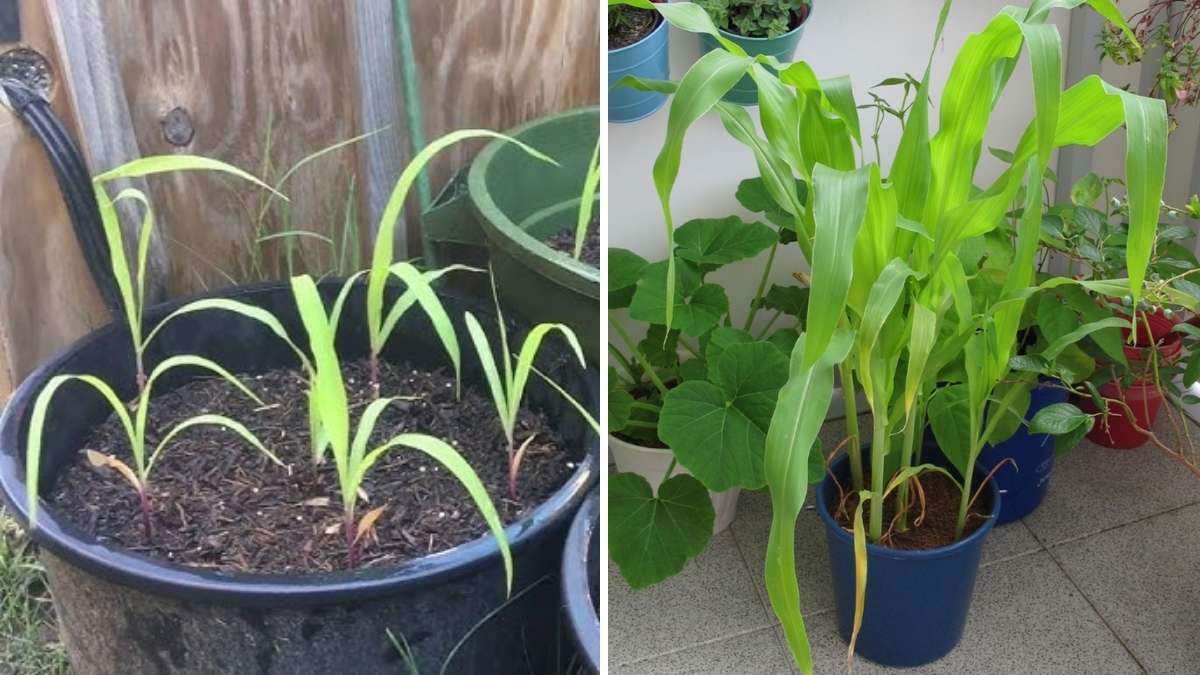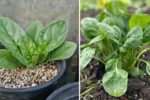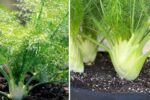Growing sweet corn in containers is a fantastic way to enjoy homegrown, deliciously sweet ears of corn without needing a sprawling garden. Whether you have a small patio, balcony, or limited backyard space, containers offer the perfect solution for growing this iconic summer crop. With the right care, even in small spaces, you can produce sweet corn from seed to harvest. This guide will walk you through the steps of growing sweet corn in containers, from choosing the right seeds to harvesting your fresh, juicy corn.
Why Grow Sweet Corn in Containers?
Sweet corn is typically grown in large fields or garden plots, but growing it in containers is entirely possible and quite effective. Containers allow you to control soil quality, moisture levels, and sunlight exposure, which can lead to a higher yield. Growing corn in containers also offers the flexibility to move the plants to better positions, especially when adjusting to changing sunlight throughout the day. Plus, container-grown sweet corn can be a fun, rewarding project for urban gardeners or those with limited space.
Materials You’ll Need
To grow sweet corn successfully in containers, gather the following materials:
- Large, deep containers (at least 18-24 inches deep and wide)
- Sweet corn seeds (choose dwarf or container-friendly varieties)
- Well-draining potting mix
- Organic compost or slow-release fertilizer
- Watering can or garden hose with a gentle spray nozzle
- A sunny location with at least 6–8 hours of sunlight per day
Step 1: Choose the Right Container
Corn plants have long, deep roots, so it’s essential to choose a container that provides ample space for the roots to grow. A large, deep pot is ideal for this purpose. The container should be at least 18–24 inches deep and 12–18 inches in diameter to give the roots enough room to expand. Choose containers with drainage holes to prevent waterlogging, which can lead to root rot. If you plan to grow more than one plant, ensure there’s enough space between each container or plant to allow for air circulation.
Step 2: Select the Right Sweet Corn Variety
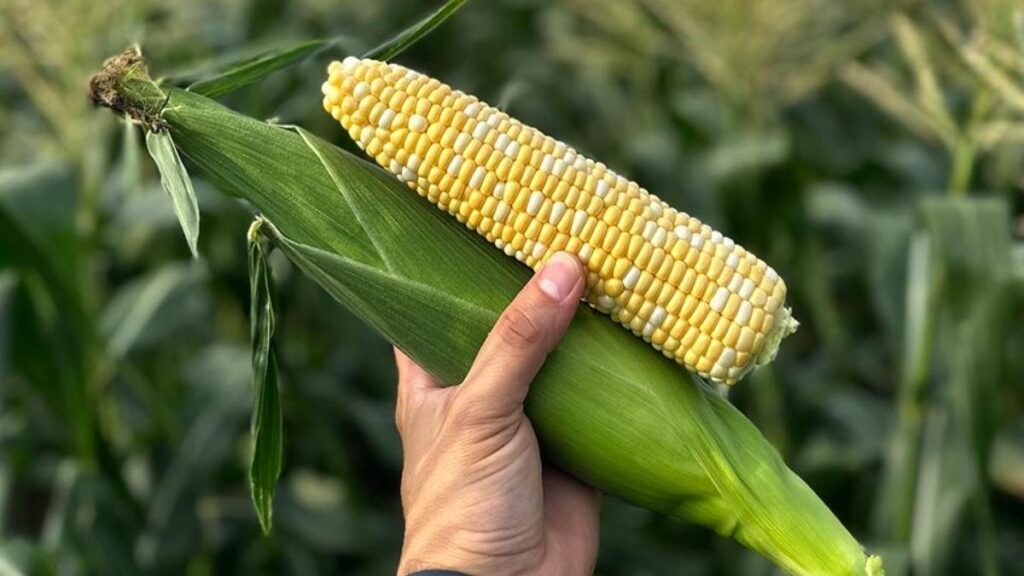
Not all corn varieties are suitable for container growing, as traditional corn plants can grow quite tall and require a lot of space. For container gardening, choose dwarf or “miniature” varieties of sweet corn that are more compact and can thrive in smaller spaces. Varieties such as ‘Baby Golden’ or ‘Golden Bantam’ are perfect for container growth, as they reach a manageable height and produce sweet, tender ears. These varieties typically grow to about 3 to 4 feet tall, making them ideal for pots or containers.
Step 3: Prepare the Soil
Sweet corn prefers well-draining, fertile soil. Start with a high-quality potting mix designed for vegetables or a mix of peat moss, perlite, and compost. Fill your container with soil, leaving about 2–3 inches of space from the top to allow for watering. It’s important to mix in some organic compost or slow-release fertilizer to give the corn plants a nutrient boost. Sweet corn requires plenty of nutrients, particularly nitrogen, to grow healthy and tall.
Step 4: Planting the Sweet Corn Seeds
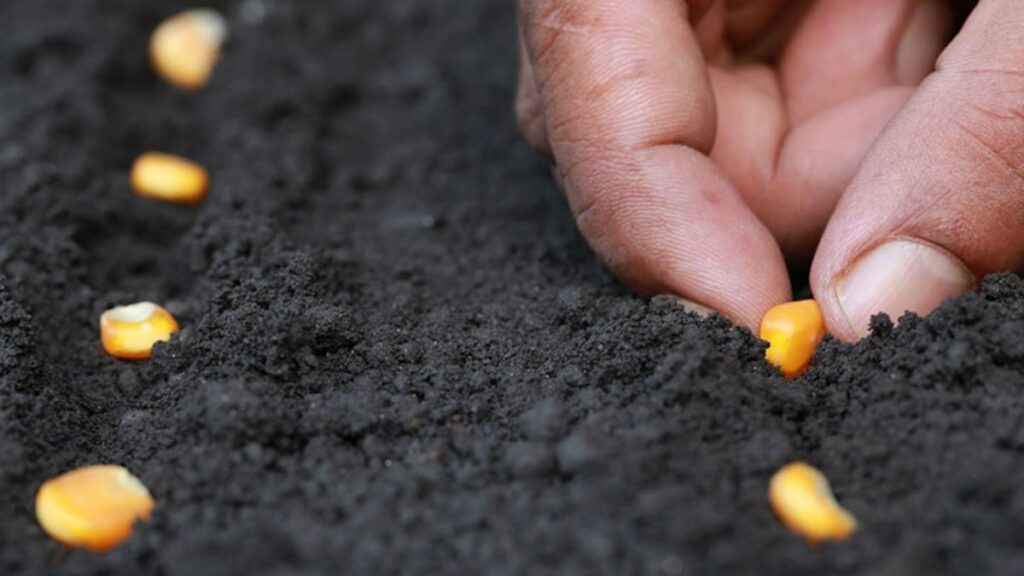
Corn is best planted directly into the container, rather than being transplanted from seedlings. The seeds should be planted about 1–2 inches deep in the soil. Plant three to four seeds in a small group to mimic the natural pollination process. Space the seeds about 6–8 inches apart. Once the seeds are in place, cover them with soil and water gently.
Corn is wind-pollinated, so planting in small groups increases the likelihood of successful pollination. If you are growing corn in multiple containers, make sure the plants are close enough for wind to carry the pollen between them. This is essential for producing full, well-formed ears.
Step 5: Watering and Sunlight
Sweet corn thrives in full sunlight, so place your container in a spot where it will receive at least 6–8 hours of direct sunlight each day. Corn plants are sun-loving, and ample light helps them grow tall and strong.
Water your corn regularly, keeping the soil moist but not soggy. Corn has shallow roots, so it requires consistent moisture to prevent the plants from drying out. If the soil dries out completely, it can stress the plants and affect growth. However, avoid overwatering, as this can lead to root rot. To ensure deep watering, water the container thoroughly so that the moisture reaches the root zone.
Step 6: Fertilizing for Growth
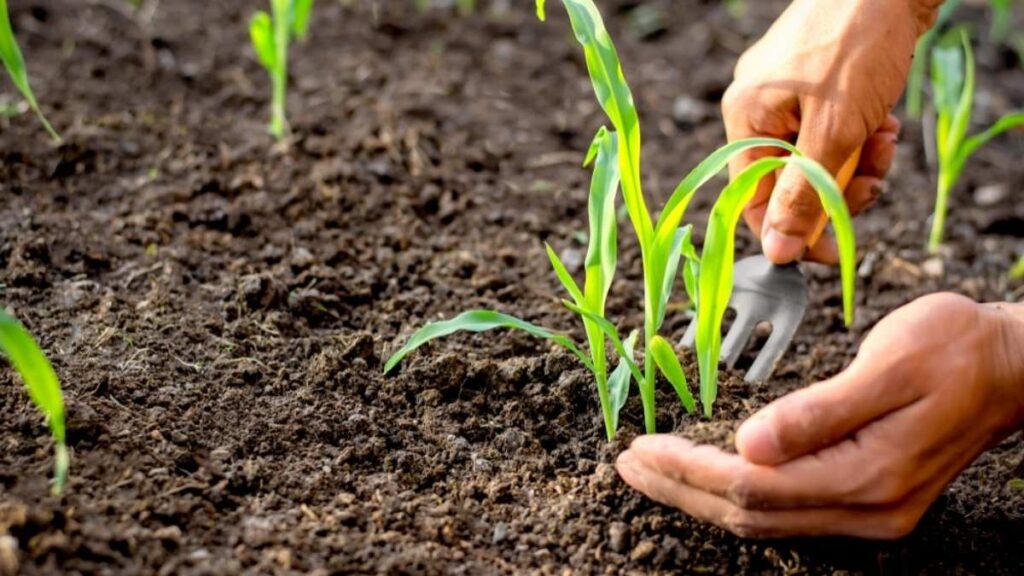
Sweet corn is a heavy feeder, which means it needs plenty of nutrients to reach its full potential. About 2–3 weeks after planting, you can start fertilizing the corn with a liquid fertilizer that’s rich in nitrogen, phosphorus, and potassium. Corn particularly benefits from nitrogen, which supports leafy growth. Use an organic or slow-release fertilizer for a steady supply of nutrients. Repeat fertilization every 3–4 weeks throughout the growing season.
Avoid fertilizing too frequently, as over-fertilizing can result in excessive leaf growth at the expense of ear production. Pay attention to the corn plants if the leaves start turning yellow, it may be a sign that they need more nutrients.
Step 7: Supporting the Plants
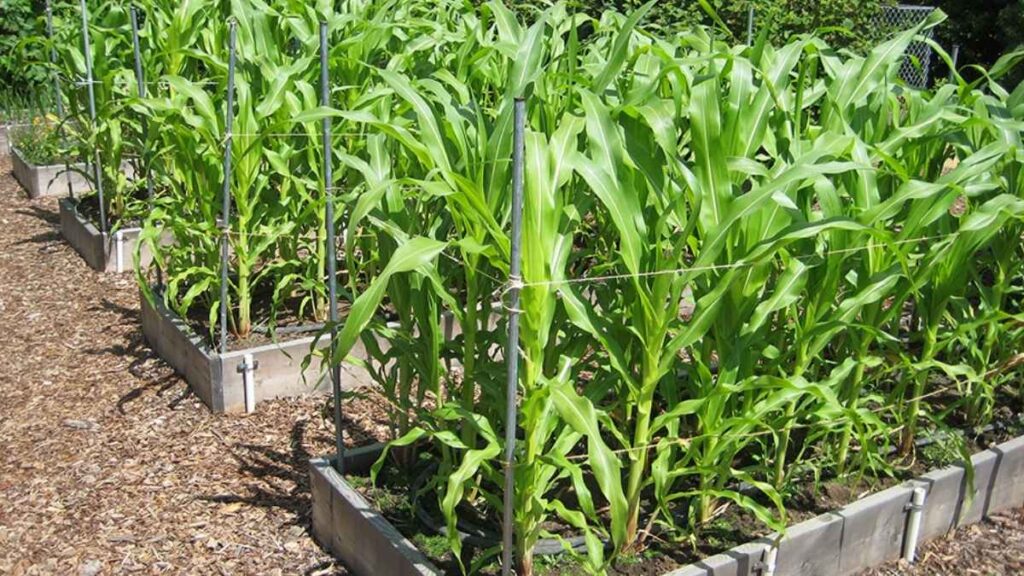
As your sweet corn grows taller, it may require some support. Container-grown corn can sometimes be top-heavy, especially if grown in a windy area. To prevent the plants from toppling over, provide a sturdy support system such as bamboo stakes or a small trellis. Insert the stakes into the container and gently tie the plants to the stakes to keep them upright. This helps prevent the plants from bending or breaking as they grow tall.
Step 8: Pollination and Ear Development
Corn plants rely on pollination from wind to produce kernels. Since your corn is growing in containers, it’s essential to ensure adequate pollination by planting in small clusters of 3–4 plants in each container. The wind will carry the pollen between the plants, but if you’re growing a few containers, you may want to shake the plants gently to help the pollen spread.
Once pollinated, the ears will start to develop, and you’ll notice the husks beginning to form. Sweet corn typically takes about 60–100 days to mature, depending on the variety. Watch the silks on the ears; when they turn brown, it’s a sign that the corn is nearly ready for harvest.
Step 9: Harvesting Sweet Corn
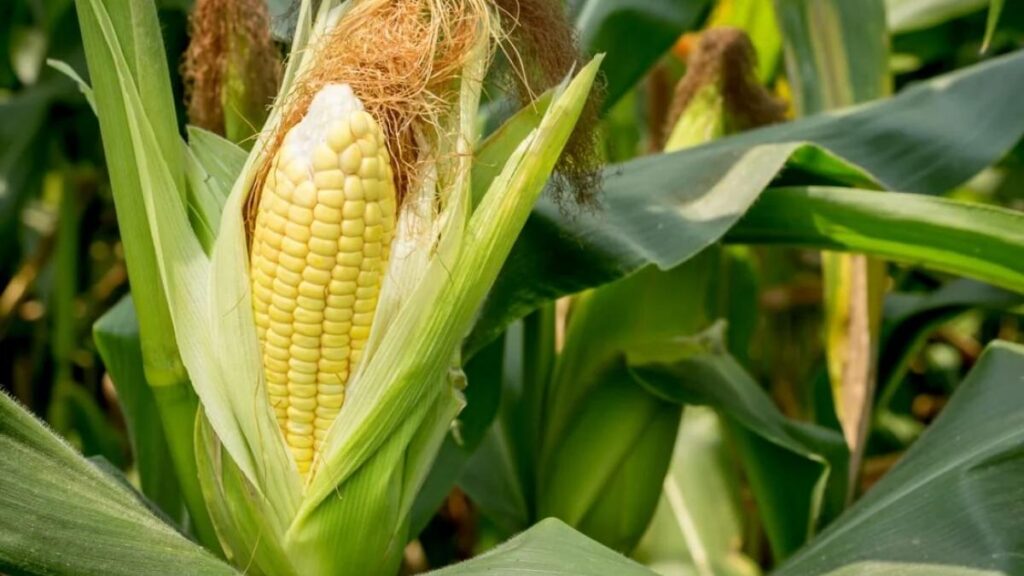
Harvest your sweet corn when the kernels are plump and the silks are dry and brown. To check if the corn is ready, peel back the husk slightly and press on a kernel. If the juice is milky, it’s time to pick the ears. Use a sharp knife or garden scissors to cut the ears from the stalks, making sure to leave some of the stalk attached for easier handling.
It’s best to harvest sweet corn in the morning, as the sugars in the kernels are at their peak. After harvesting, cook the corn immediately for the best flavor, or store it in the fridge for a few days if you plan to enjoy it later.
Conclusion
Growing sweet corn in containers is a fun and rewarding project for gardeners with limited space. By choosing the right variety, providing proper soil, and ensuring consistent care, you can grow healthy, sweet corn that will thrive in containers. With a little attention to detail, you can enjoy fresh, homegrown sweet corn straight from your patio or balcony. Whether you’re a beginner or an experienced gardener, growing corn in pots is a fantastic way to bring a taste of summer to your home.
